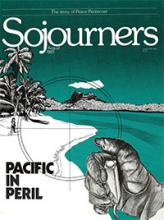Places. You can feel the spirit of places. On a recent speaking tour in Germany, I learned that again. Our first weekend conference took place in Barmen. Here in 1934, the leaders of the Confessing Church gathered to draft the Barmen Declaration, a theological statement against Hitler and Nazism. Karl Barth was the principle author. Everyone who signed the Barmen Declaration was eventually exiled, imprisoned, or killed.
Most people at the conference seemed unaware of the historical significance of our meeting place, but a few knew the story. They sensed my excitement and offered to take me to the church where the 1934 gathering had occurred. The original church had been bombed, and a new building stood on the site. No memorial to that great event of almost 50 years ago remained. I felt that to be strange and sad.
Read the Full Article

